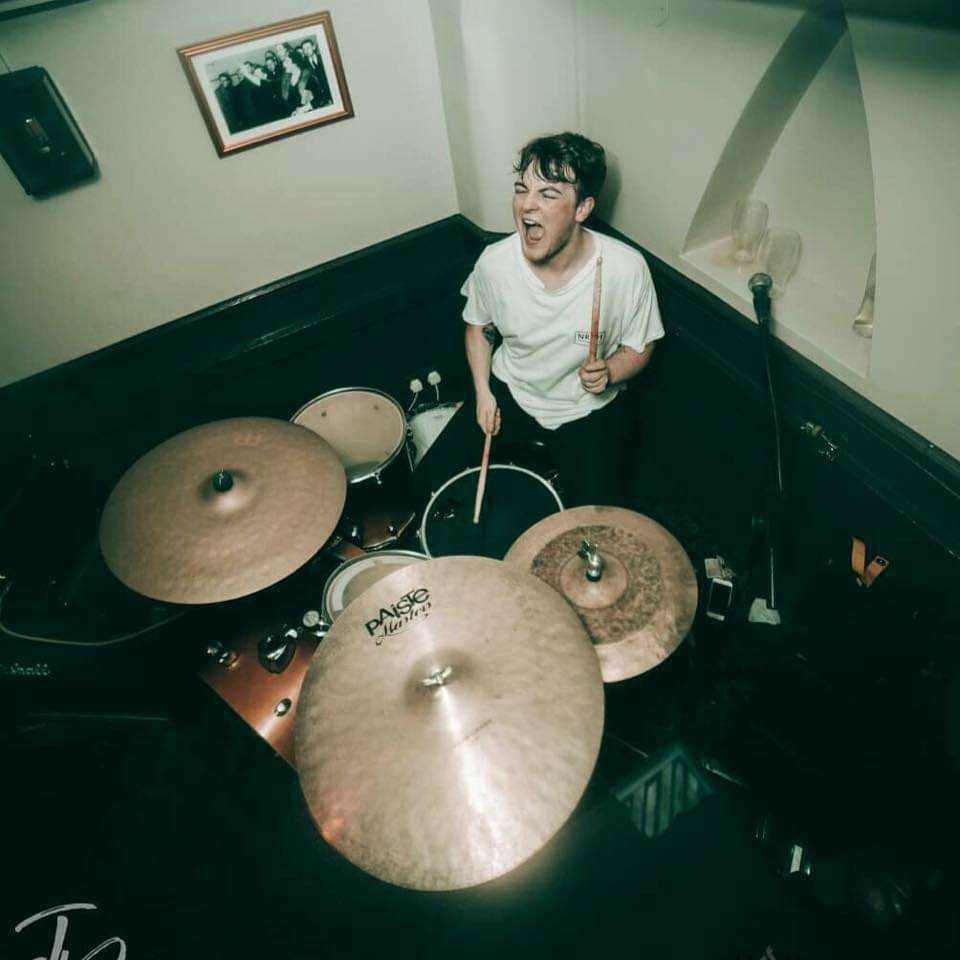Best guitar pedals for beginners 2025: 9 great pedals for a versatile pedalboard
Expand your tone and explore new sounds with this collection of the best beginner effects pedals for guitarists
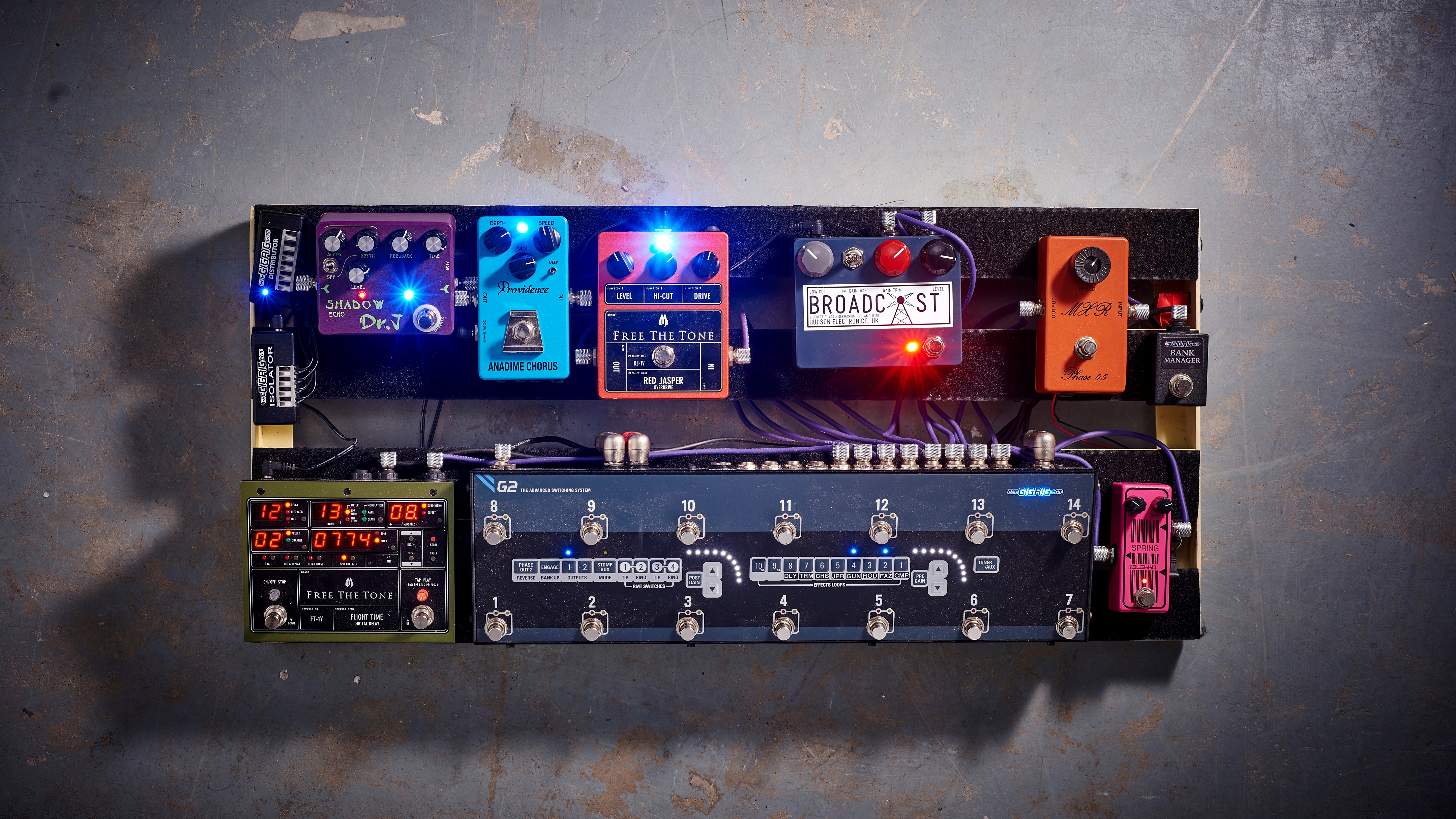
As a beginner guitarist, the amount of new and exciting things to buy can be pretty overwhelming - and that’s even without thinking about the best guitar pedals for beginners. If you’re not completely au fait with your pedal types, styles, brands and the sounds they produce, then buying your first few - or building your first pedalboard - is only ever going to be a difficult task. It seems like more new pedals are released every week by more new pedal brands, so it’s important for you to know which are the best guitar pedals for beginners and which pedals are worth avoiding like the plague.
Guitar effects pedals have posed as the cornerstone of some of guitar music’s most infamous and iconic sounds. Jimi Hendrix, Stevie Ray Vaughan, Tom Morello and Tony Iommi are just some of the hundreds of thousands of guitarists who put their faith in effects pedals to create their perfect guitar tone - and with the amount of pedals on offer right now, you’ll never struggle to find the pedal which helps you find yours.
This guide covers what we think are the best guitar pedals for beginners. We’ve included pedals from different price points (although we’d say they’re all affordable for beginners) and pedals from the most popular brands - and we’ve even tried to include one of everything you’ll need to create a full pedalboard, capable of an array of tones.
We’ve included some in-depth buying advice at the end of this guide, so if you’d like to read more about the best guitar pedals for beginners and what you should know before buying one, then click the link. If you’d like to get straight to the products, then keep scrolling.
Best guitar pedals for beginners: Our top picks
For those who are finding the sheer amount of pedals available to be overwhelming, there are few that we’d absolutely recommend you buy before anything else - that is, if you already have a guitar tuner.
Probably the most popular guitar effect is Overdrive/Distortion - and to achieve this tone we’d recommend you go for either the NUX Steel Singer or the Boss BD-2 Blues Driver. This product category is full of great options, and you’ll not go wrong with any other overdrive or distortion pedal on this list, but we think that either of those are the most versatile choice. Don’t let the ‘Blues’ title of the Blues Driver fool you either - it can make any tone sound pretty gnarly.
We’d also recommend you buy yourself a chorus pedal, and in that case, there’s nothing better than the Electro-Harmonix Neo Clone. Granted, there might be some chorus pedals that sound a bit better or are a bit more sophisticated, but for this price? No chance. The Neo Clone delivers every wavey, wobbly chorus tone you could ever imagine - but for much less than you’d think.
A delay pedal is our third and final ‘true essential’ - and our pick is the JHS 3 Series Delay. Delay can be a very versatile and classy effect when you learn how to use it right. That can take a little bit of time - but once you’ve nailed how to use your delay pedal, you’ll be able to go from slapback country tones to big, ambient soundscapes at the drop of a hat. Delay pedals are a great way of making your tone sound much bigger and fuller than it actually is - something which never really gets old.
Best guitar pedals for beginners: Product guide
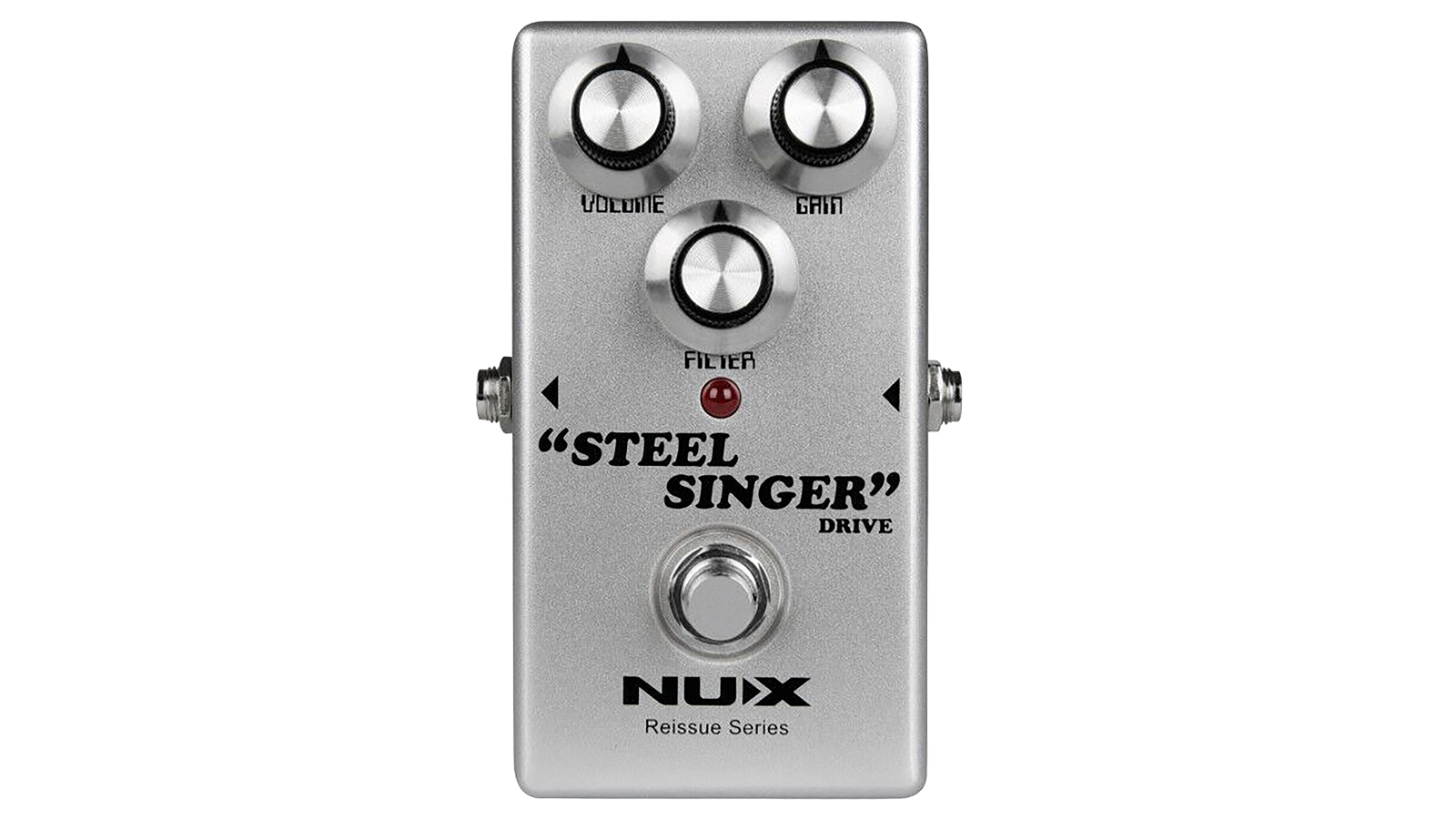
1. NUX Steel Singer Drive
Our expert review:
Specifications
Reasons to buy
Reasons to avoid
The Steel Singer Drive from NUX is one of the best low-to-mid-gain overdrive pedals on the market today. While it may not sound as sophisticated as some of the most high-end pedals out there, the exceptional price and build quality makes it a bit of a no-brainer, especially if you’re new to the world of effects pedals.
This pedal is, essentially, a clone of the Steel String by Vertex Effects - a pedal which retails at around $/£200. Pedal ‘cloning’ is a very common thing to happen in the world of guitar effects, and especially for beginners, it’s something to take advantage of. The ‘real’ pedal never sounds that much better than the clone. In this case, you can get the sound of the iconic Dumble amp for hardly any cash - so we think it’s worth it.
All we’d say about this NUX pedal - and any super-cheap pedal, for that matter - is that we’re actually a bit suspicious of how cheap this pedal is. Especially considering how solid it feels, we don’t really understand how it can only cost this much money. We’re deciding to not ask too many questions though, and just buy one instead. Or two.
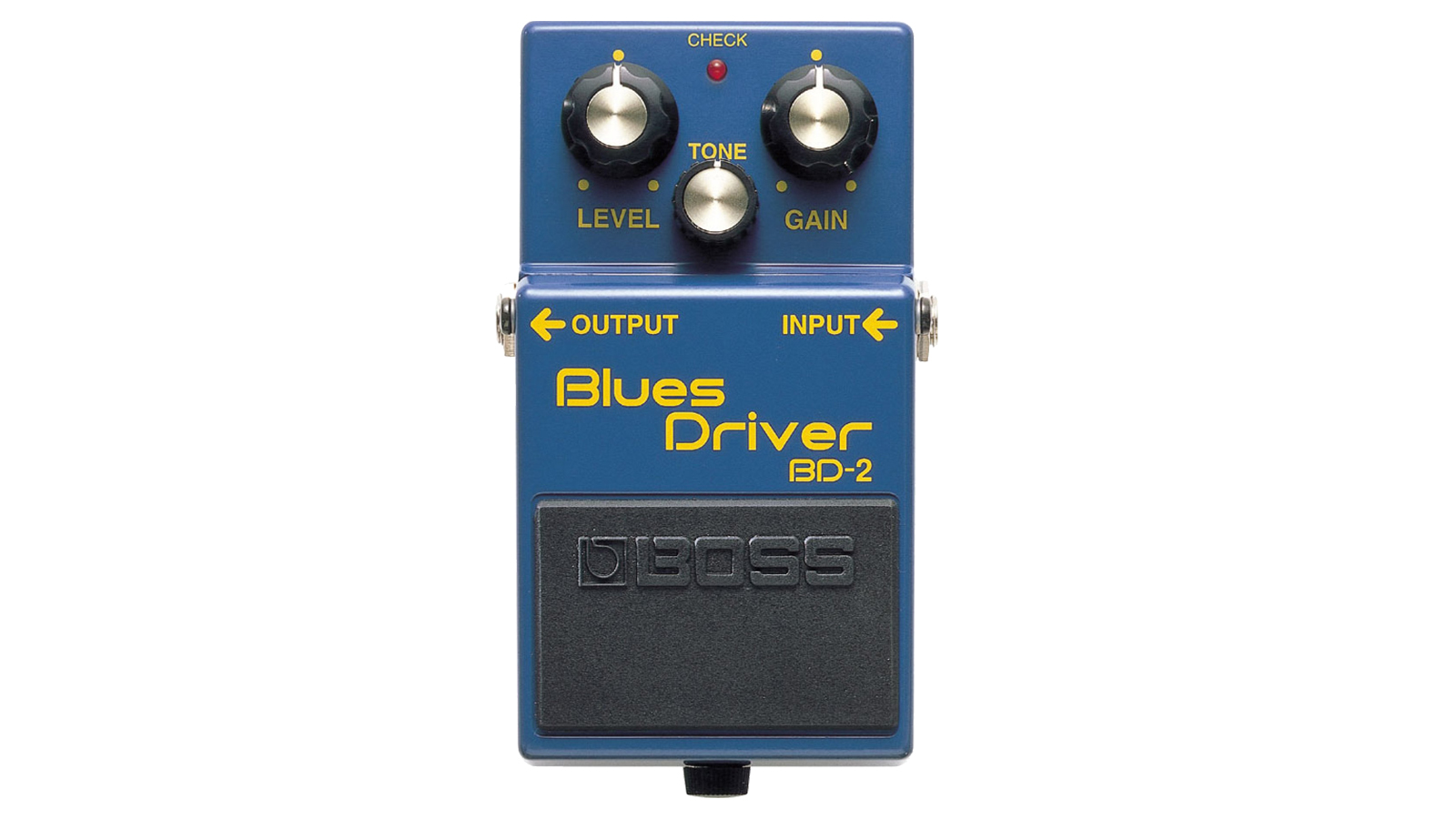
2. Boss BD-2 Blues Driver
Our expert review:
Specifications
Reasons to buy
Reasons to avoid
You’ll be pleased to know that, as a beginner, you don’t need to spend loads of money to get a professional-quality tone. Boss pedals are some of the most popular and iconic pedals on the market, and the Blues Driver is one of the very best - having been played by the likes of Prince, Tom Morello and Billie Joe Armstrong… and now you.
It’s quite apparent that the Blues Driver is great at taking care of all of those low and mid-gain tones, but when paired with the right amp, it can take on the higher-gain tones too. This makes it great for those flurries of hard rock riffing that you may encounter. The BD-2 can even act as a great, clean-ish boost for stacking with other pedals. The tone is fairly warm and rounded, meaning that your gain tones will sound satisfying no matter what settings you use.
It’s not really a metal-friendly pedal, but that’s really all it can’t do. The versatility of the Blues Driver makes the slightly higher price more than worth it - and you won’t grow out of it either.
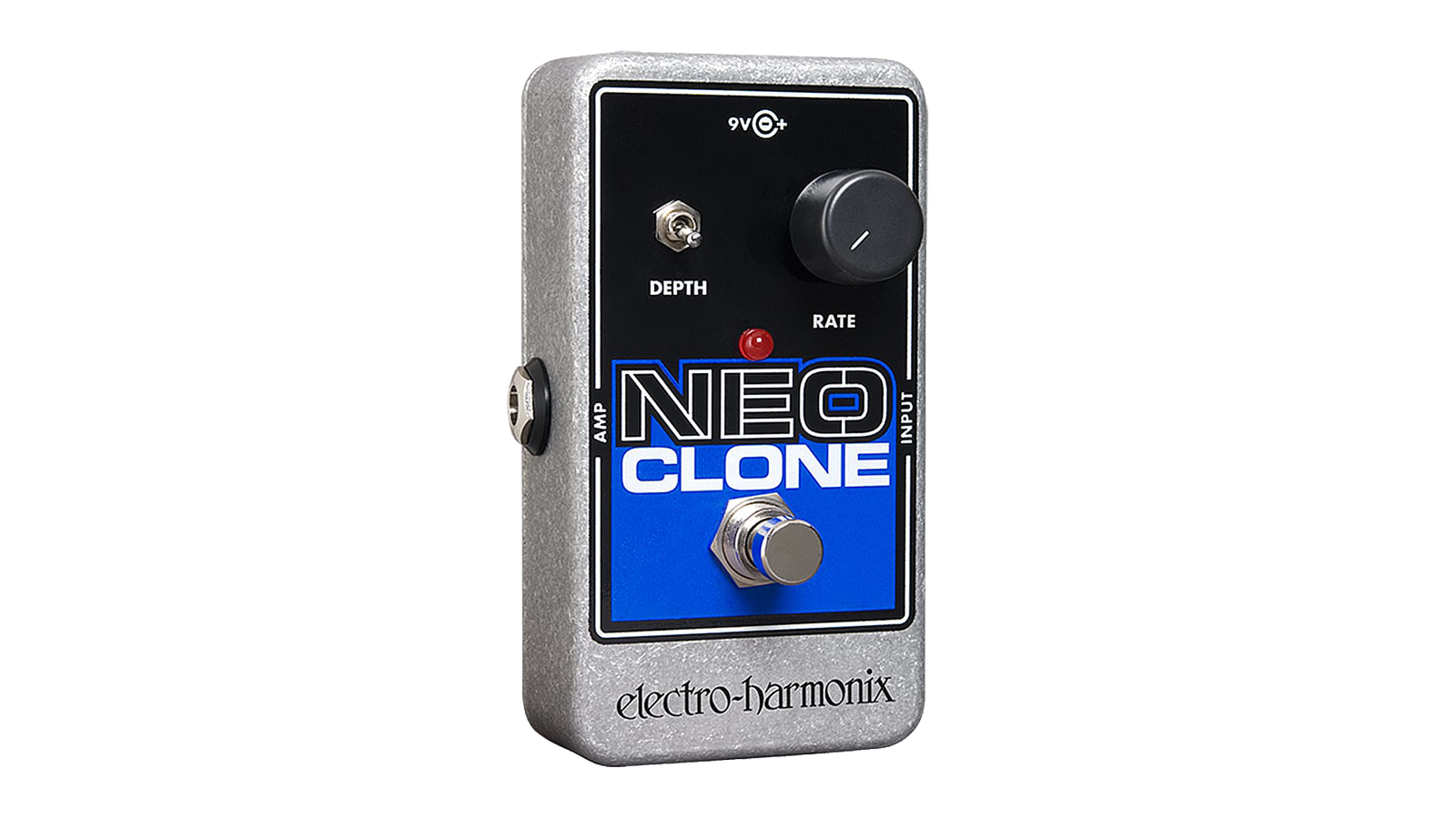
Specifications
Reasons to buy
Reasons to avoid
The Neo Clone produces one of the most iconic chorus sounds in the world. It’s a recreation of the original EHX Small Clone - the chorus pedal that helped Kurt Cobain capture the hearts of millions with that iconic ‘underwater’ tone - and lo and behold, it sounds great.
The Neo Clone, much like the large majority of Electro-Harmonix products, is a super simple pedal. Two different types of Chorus depth can be accessed via the switch on the front, with the effect rate being the main tweakable parameter onboard. It sounds too simple, really - but we’ve found that Electro-Harmonix pedals tend to have that ‘special something’ which makes us never want to let go. It’s a simple pedal, which just sounds great. No frills - just great chorus.
There’s no chorus pedal more beginner friendly than the Neo Clone, and when you consider the quality, the size and the price, we’ll bet you start wondering why you ever thought you needed more. Granted, it might not be the cleverest or most sophisticated chorus pedal around, but if you want that ‘90s charm, look no further.
Read the full Electro-Harmonix Neo Clone review
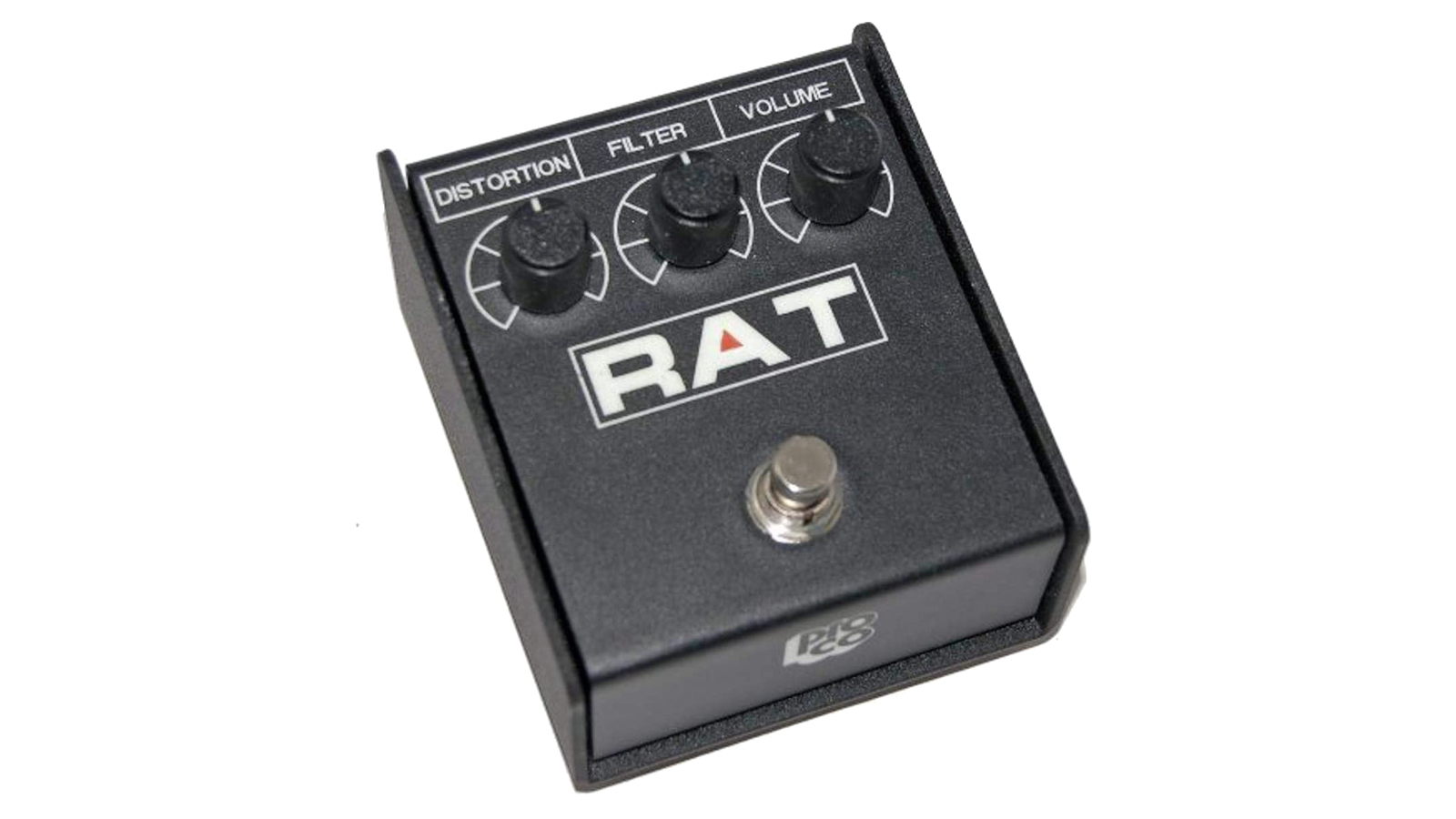
4. ProCo Rat 2
Our expert review:
Specifications
Reasons to buy
Reasons to avoid
The ProCo Rat has one of the most memorable and iconic distortion tones of all. Its ever-distinguishable black enclosure is sitting on pedalboards all over the world, and for good reason.
For a pedal called the ‘Rat’, you’d expect the tone to be ugly, dirty and turn up some noses - and while it does achieve those exact tonal aims, this is not a pedal to run screaming from. If the sound you’ve been dreaming of is a thick, punchy, powerful distorted guitar tone, then this is one of the best pedals you could buy to help you achieve that. At both low- and high-gain settings you’ll get a dynamic, aggressive response which will help you take your tone to the next level.
Higher gain settings on the Rat may see your guitar tone getting a bit mushy and muddy. The Rat is a classic, old school distortion pedal, and isn’t exactly designed to get you a super precise ‘modern metal’ tone. If you’re looking to be transported back to an ‘80s punk show in a dirty club however, this is the pedal for you.
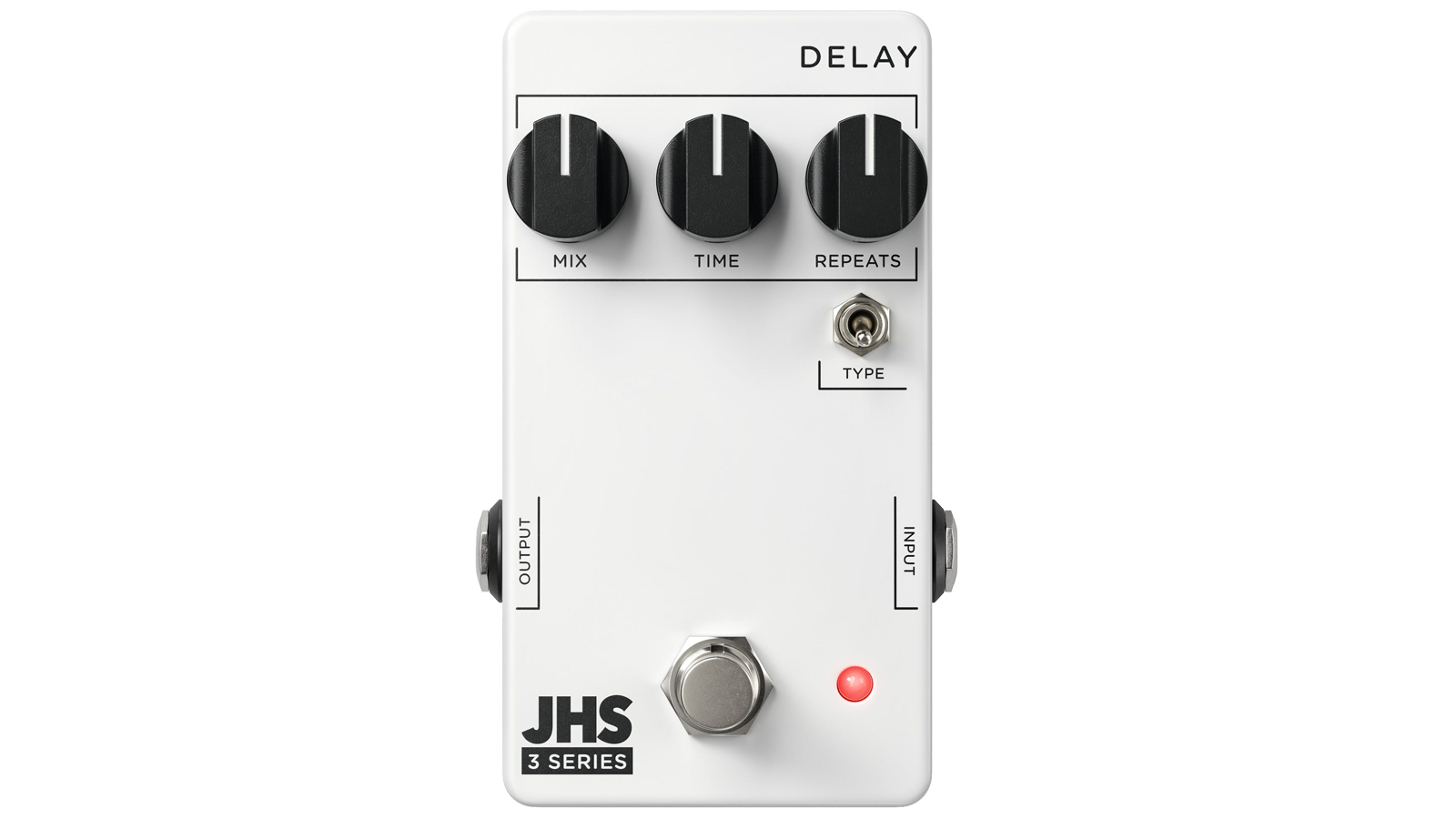
5. JHS Pedals 3 Series Delay
Our expert review:
Specifications
Reasons to buy
Reasons to avoid
A delay pedal, in our opinion, should be one of the first pedals you buy. There’s just something about a delay-laden tone which we can’t get over. Maybe it’s the expansive, ambient repeats, or the rhythmic aspect - or the fact that it can turn a fairly simple guitar part into a disorientating musical maze. Obviously when buying any pedal, it’s important to strike a healthy balance between price and quality, and with delay pedals being more expensive than many others due to the circuitry inside them, you’ll be looking to spend upwards of $/£70 to get what you need. The JHS 3 Series Delay sits around the $/£100 mark, and we think it’s worth spending a bit more on this occasion.
Yes, having a utilitarian delay pedal may save you money, but the whole idea behind using delay is that you’re embellishing your tone, and adding extra things to it to make it more interesting. The 3 series delay still only has three controls - Mix, Time and Repeats - which are nothing groundbreaking in themselves, but when combined with the ‘Type’ switch, which alters the sound from a more digital delay to an analogue-style sound, the personality and ambience of this pedal comes to the forefront with a little more confidence.
We’d like to reiterate that while we recommend you spend a little more on a higher quality delay, there are cheaper options on the market. This is the only three-digit price tag in this guide, and if you’re just starting out, that’s a huge investment. Every delay pedal essentially does the same thing - it’s just about finding the one that suits you best.
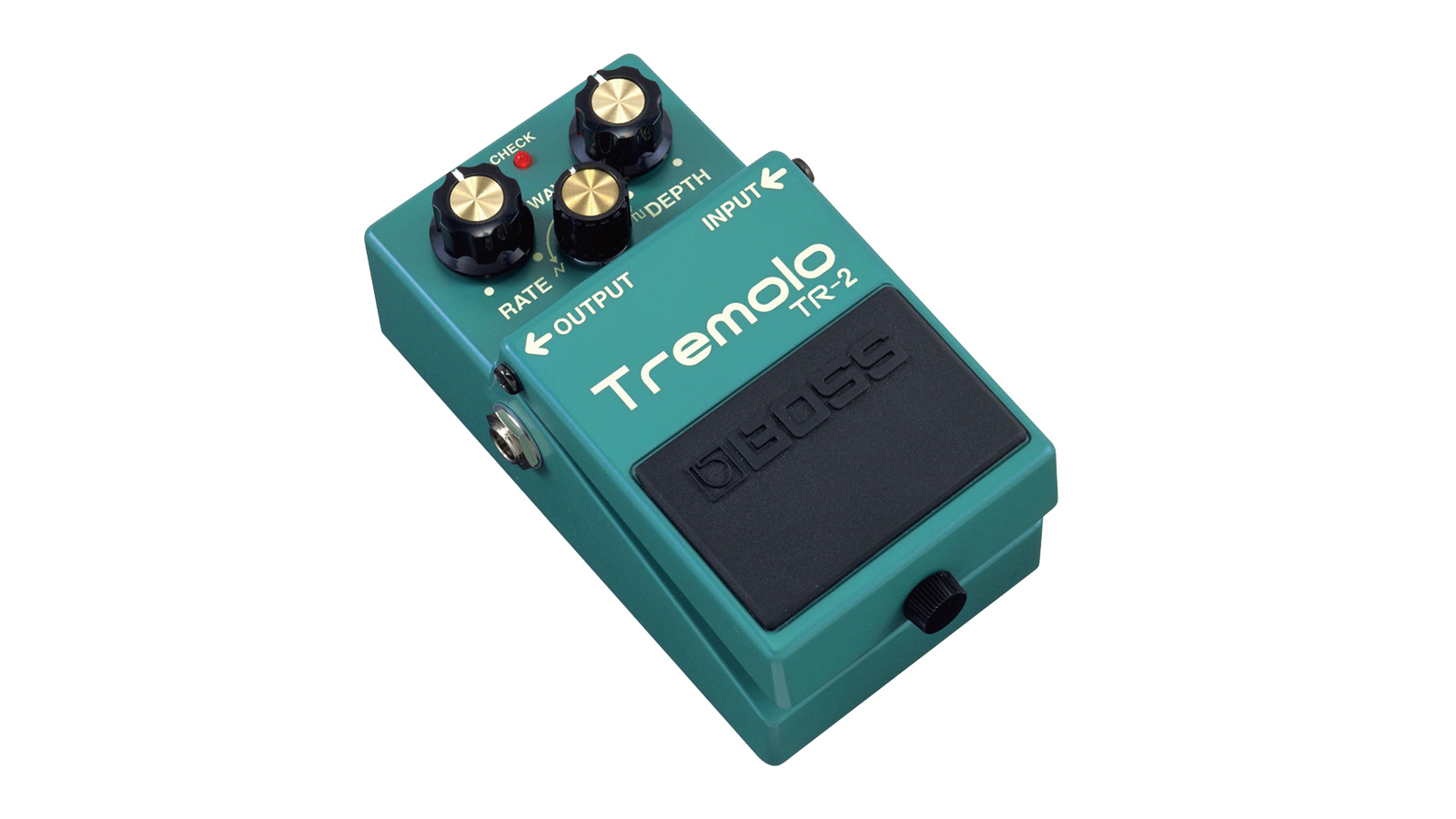
6. Boss TR-2 Tremolo
Our expert review:
Specifications
Reasons to buy
Reasons to avoid
Make no bones about it - we love Boss pedals. They’re iconic in the way that they look and sound, and for what they are, the price is exceptional. The TR-2 Tremolo continues that trend, offering you some truly tasteful and sweet-sounding tremolo for what we think is a beginner-friendly price, all considering.
When you’re looking for a good deal on a pedal, the build quality is something we pay close attention to - and the Boss TR-2 is incredibly well built. Beginners tend to find themselves in a bit of a pedal quagmire over whether they should spend a bit more for something that’ll last, or buy something cheap just to see what they think. It’s difficult, and there’s no definitive answer, but we’ve always found that saving up just that little bit extra made for much more satisfaction in the end.
Satisfying is a great way to describe the TR-2, in all fairness. The tones it produces can be anywhere from subtle, natural wobble and warmth all the way through to ultra-staccato and chopped up. The setup, while simple, offers a wide range of tweaking - making this tremolo pedal perfect for most players, in fact - not just beginners.
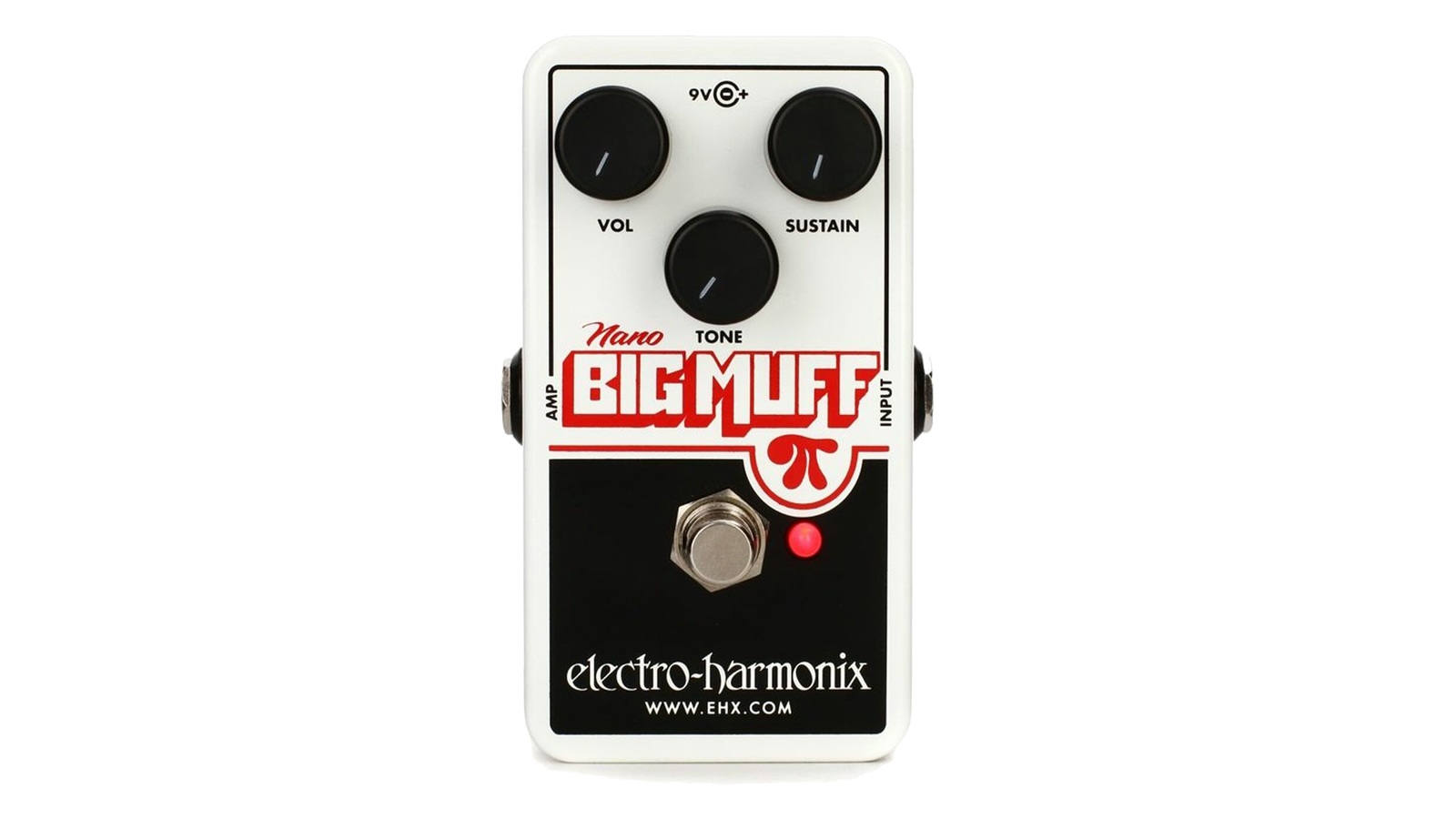
7. Electro-Harmonix Nano Big Muff
Our expert review:
Specifications
Reasons to buy
Reasons to avoid
The Big Muff is by far the most popular and well-known pedal from Electro-Harmonix. This model of fuzz pedal has been reissued, rebuilt and revamped endless times over the years, with each version boasting a slightly different circuit design and therefore a slightly different sound, but the Nano Big Muff is the ‘standard’ version - and it’s an icon for a reason.
If you’re after a killer, memorable fuzz tone, then you can’t go far wrong with the Big Muff. It gets its sound by ‘scooping’ (or removing) the mid-frequencies in your guitar tone - meaning that when you get it right, the impact and impression your tone will leave is nothing short of epic. This lack of mid-frequencies means that your tone might get lost in a live setting, however - so it’s worth paying attention to that if you’re jamming and gigging for the first time. The low price of the Nano Big Muff - or virtually all EHX pedals for that matter - is another huge bonus. This pedal even pops up in our guide to the best cheap guitar pedals, as the price is that good.
It’s by no means the easiest pedal to get the hang of, and you’ll likely need to employ some trial and error here to find which settings work best for you - but once you’ve got it nailed, you’ll be in a state of tonal bliss.
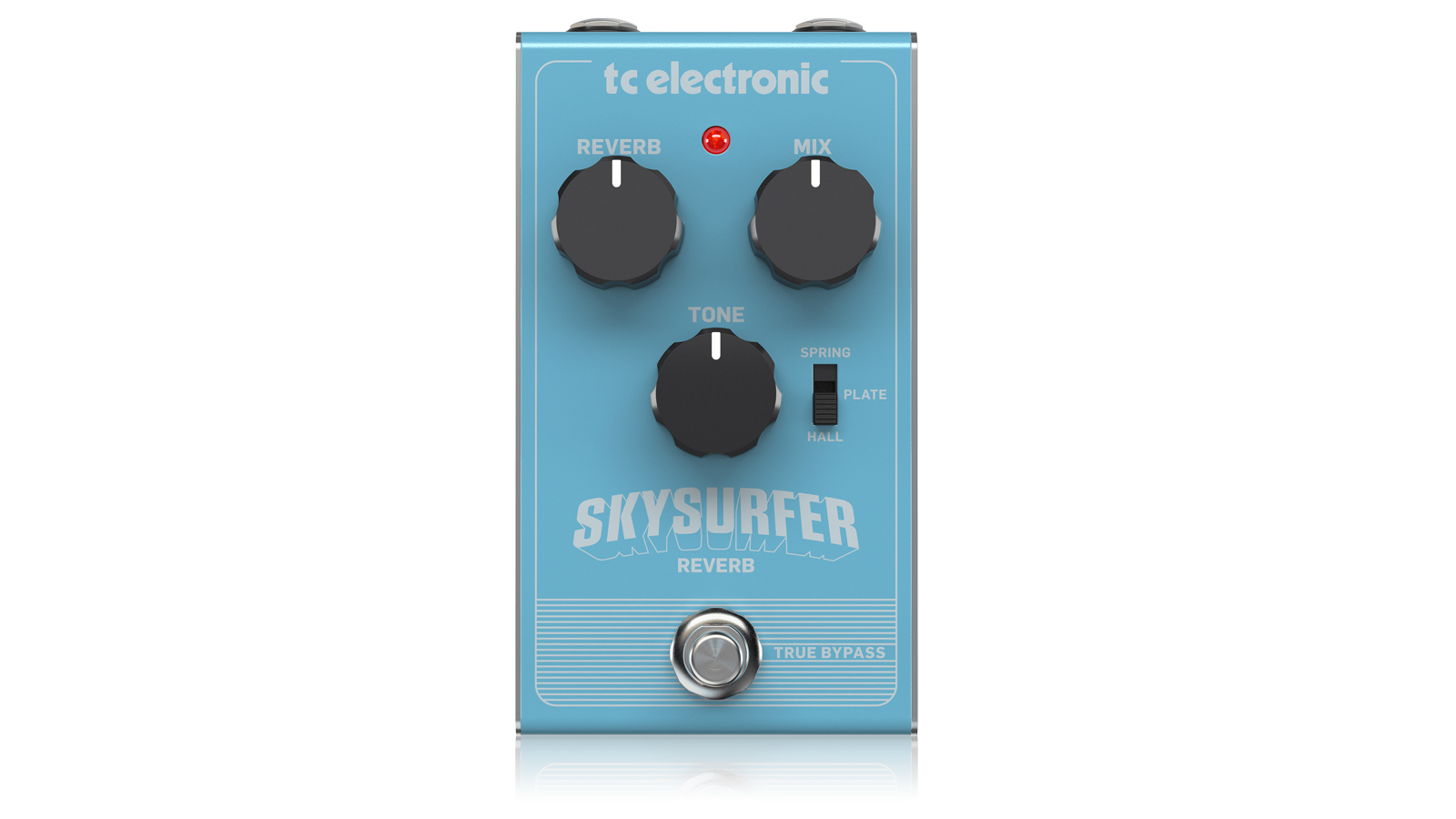
8. TC Electronic Skysurfer Reverb
Our expert review:
Specifications
Reasons to buy
Reasons to avoid
We’re honestly not sure how TC Electronic does it, but in the Skysurfer we have yet another well built, all-metal enclosed effects pedal for under $/£40. For something that’s designed to be stomped on, this design element is something we’re eternally thankful for - and we’re pretty pleased with the sounds this pedal creates too.
The reverb pedal is a hugely underrated addition to anyone’s pedalboard. While some amps will have reverb built-in, there are still many that don’t. If you’ve ever tried to play guitar without even the smallest bit of reverb, you’ll know that, while it’s possible, it sounds dry, a bit fake and a little bit flat. Enter the Skysurfer, a compact reverb pedal that offers spring, plate and hall type reverb effects - helping to bring your tone to life. Having the option of any of those three is a bonus too, especially for a beginner. It allows you to try a few different settings out first of all, to see what you do and don’t get on with.
Like most of TC’s more budget-friendly pedals, the Skysurfer isn’t anything too fancy. It’s a simple pedal with a layout which is intuitive and easy to use - and most importantly of all, it sounds great. While it might not be capable of some super ambient soundscapes, it does the basics as well as any pedal three or four times the price.
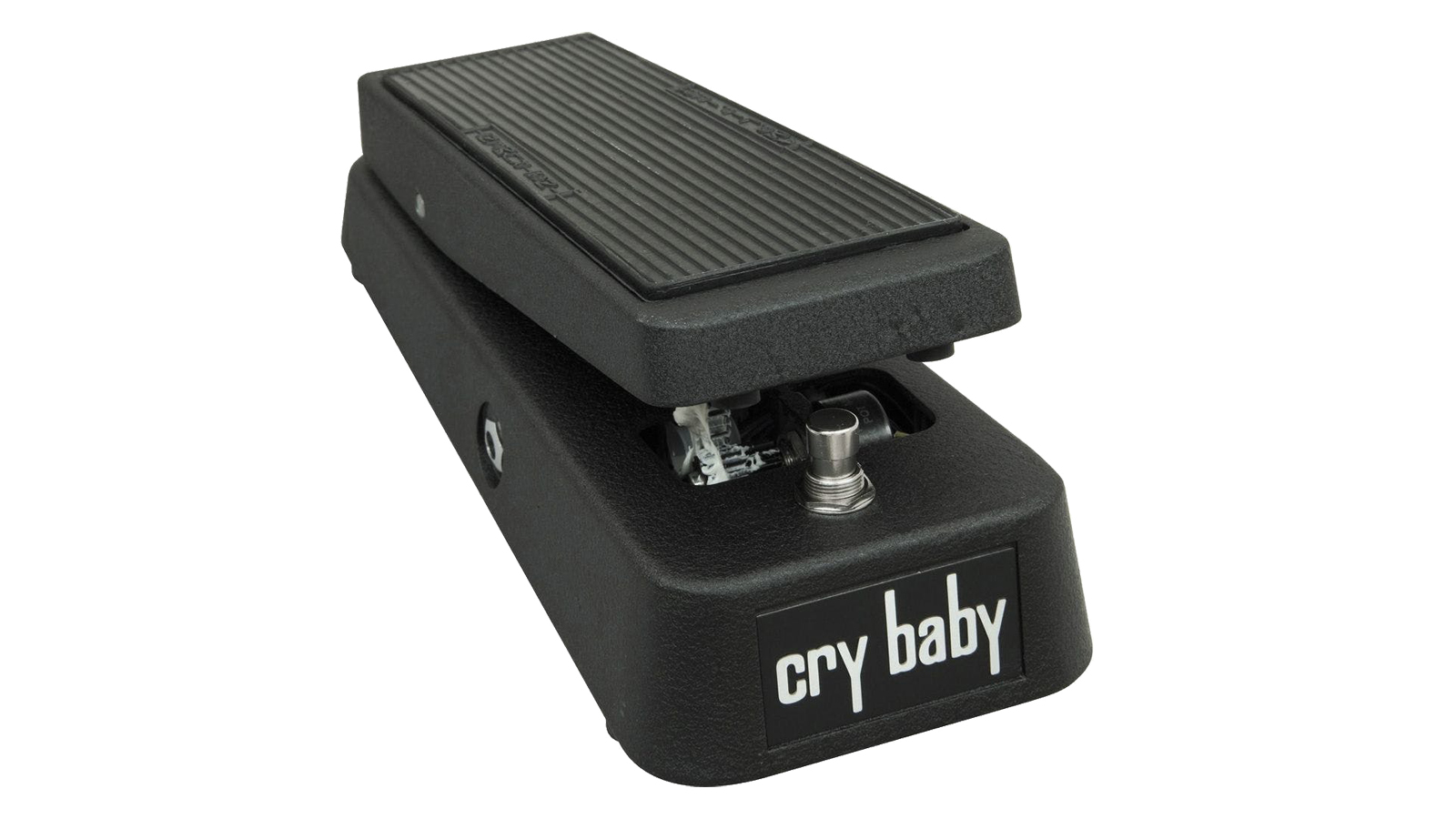
Specifications
Reasons to buy
Reasons to avoid
There are few pedals more memorable than the wah pedal. Everyone’s heard that sound - the ‘whacka whacka’ from the Shaft theme song. It’s a sound which people will never forget, and a sound which helped to shape the style of so many guitarists. The wah pedal is a go-to for players of funk, rock, metal, pop and so many in between - and that’s why we think you should have one too.
The GCB95 is the cheapest wah pedal in Dunlops catalogue, but don’t let that make you think it’s of a lesser quality to the others. It’s still as solid, sturdy and trustworthy as ever - with this model even featuring a red fasel inductor - something which is usually only found in vintage wahs. This inductor, along with the 100k Hot Potz potentiometer, gives this version of the GCB95 a smoother and sweeter frequency sweep - meaning that your wah-accompanied riffing will sound even greater.
The GCB95 has quite an aggressive sweep, but this is by no means a negative thing. This wah pedal is capable of cutting through huge amounts of distortion to get you that signature sound. Whether you’d like to channel your inner Tom Morello, John Frusciante or Jimi Hendrix - or even indulge in some ‘cocked’ wah tones reminiscent of Zakk Wylde - this is the wah for you.
Best guitar pedals for beginners: Buying advice
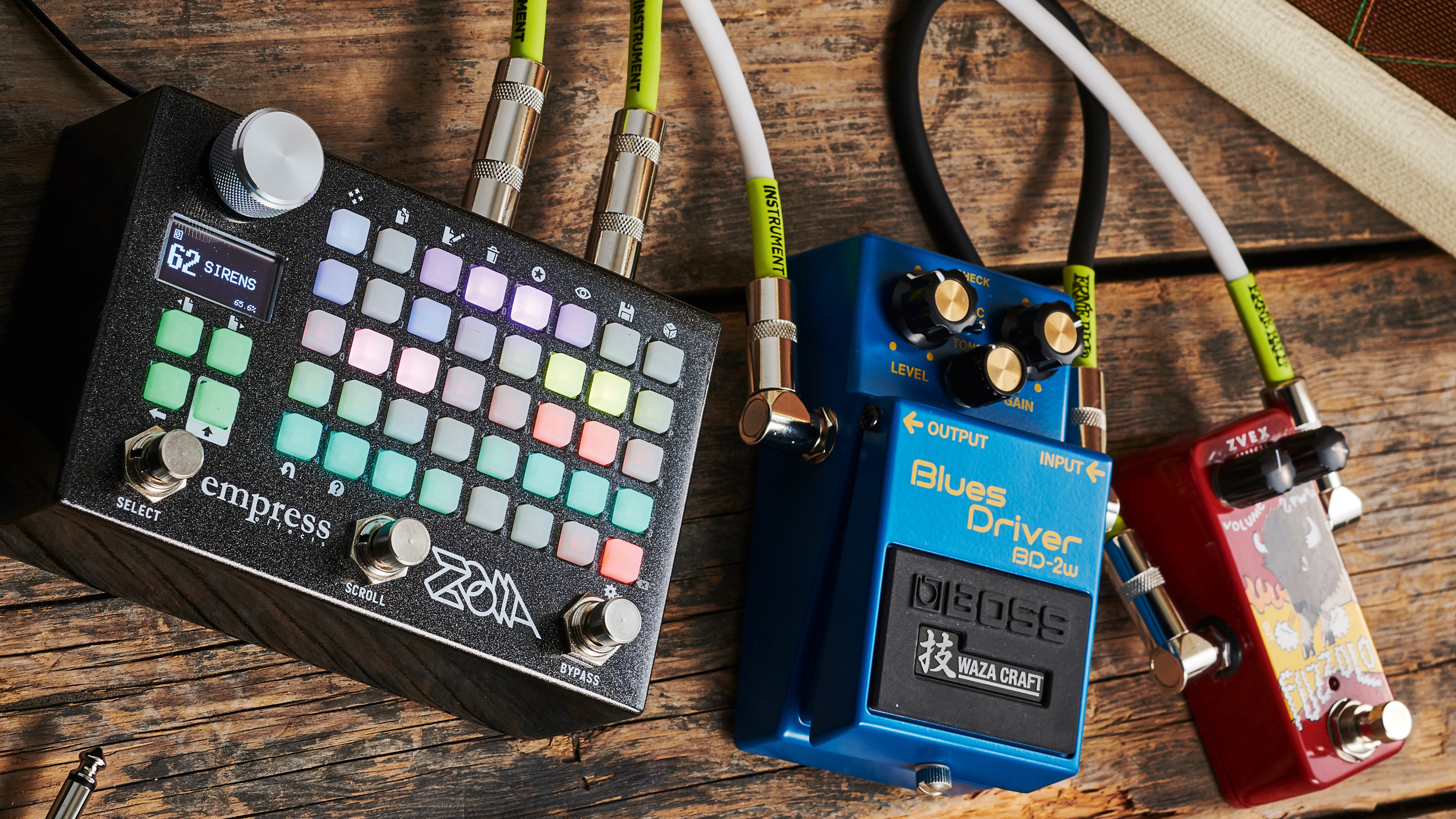
Like we said, the world of guitar effects pedals is growing at a phenomenal rate, and the amount of choice we have when it comes to pedals is frankly pretty overwhelming - even for the most experienced of guitarists. If you’re a beginner guitar player looking to understand a bit more about guitar effects and which ones are the best guitar pedals for beginners to buy, then these are some things you should know.
What are the types of guitar effects, and where have I heard them before?
MusicRadar's got your back
Overdrive
Assuming that you’ve heard some guitar-based music in your life, you’ve also heard an overdrive effect being used. Overdrive is the most common effect to be used on a guitar, as it is often produced both naturally with an amp and artificially with a pedal. Without getting too nerdy here, an overdriven guitar tone is produced when your input volume pushes your amp past its ability to create a clean guitar tone.
Where have I heard this before?: If you’ve listened to any Blues, Indie, or Classic or Prog Rock, the guitar work has most likely included an overdrive pedal or an amp turned up way louder than is socially acceptable. Think the guitar tones from Led Zeppelin’s ‘Immigrant Song’ or ‘Whole Lotta Love’.
Distortion
Distortion is essentially overdrive’s lairy older brother. The easiest way to look at it is that it’s a more aggressive, more compressed form of overdrive, and delivers a ‘heavier’ sound as a result. It differs from overdrive mostly because a distortion pedal generally provides the same amount of distortion, regardless of the volume - whereas much like a ‘proper’ tube amp, an overdrive produces more and more drive and dirt as you turn up the volume. The difference between the two is difficult to notice, especially as a beginner - so we’d suggest buying (or at least trying out) one of each to see what suits your style.
Where have I heard this before?: If you’re into any heavier styles of music, you’ve heard a distorted guitar. From Alice in Chains to Architects, the aggressive tone of a distortion pedal is a crucial piece of the tonal puzzle - so if you want those tones, it’s a distortion pedal you should be buying.
Fuzz
Fuzz is a tricky one to try and define. It’s a form of distortion which sounds very extreme and gives your notes a lot of sustain - which means they’ll ring out for a long time. Fuzz - at least in the good old days - was produced by guitars slashing or otherwise damaging the speakers in their amps. Thankfully, you won’t need to slash your speakers anymore to get a great fuzz tone, as there are plenty of pedals on the market which will provide just what you need.
Where have I heard this before?: This type of ultra-distorted guitar tone crops up more than you’d expect. Bands such as Royal Blood, Muse and Queens of the Stone Age are our go-to recommendations when looking for the use of a fuzz pedal - particularly the Royal Blood song ‘Little Monster’ and that bass guitar tone in ‘Hysteria’ by Muse.
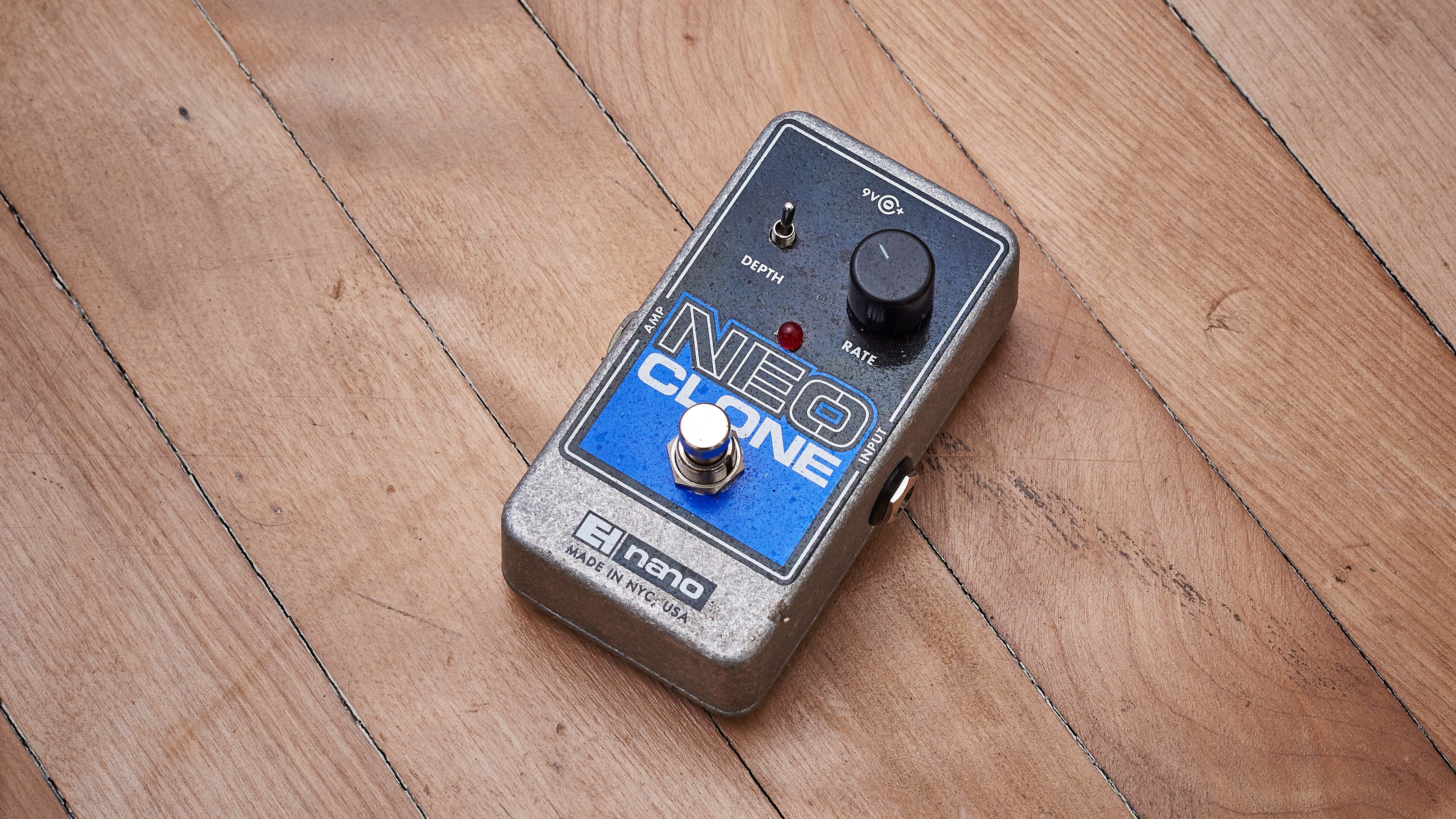
Delay
Delay pedals don’t actually delay your signal from coming out of your amp. They echo it instead, multiple times, at a repeat speed and intensity of your choosing. Most simple delay pedals will only afford you access to tweak the ‘Mix’ (how much effected signal is mixed in to your tone), ‘Time’ (the length of the delay time) and ‘Repeats’ (how many times the signal is repeated) - and even though it sounds simple, the tones you can achieve sound thoroughly impressive.
Where have I heard this before?: Think of the guitar tones on The Temper Trap’s Sweet Disposition and Fall Of Troy’s F.C.P.R.E.M.I.X. It sounds like there’s multiple guitar parts going on at the same time, but in reality you’re just hearing some exceptionally well-timed delay in use.
Chorus
Chorus pedals are an iconic guitar effect. They helped to define the sound of the ‘90s for so many through their importance to the ‘grunge’ tone, and are used commonly nowadays to add a slightly ‘wobbly’ sounding shimmer to clean and dirty guitar tones alike. Chorus pedals create that sound by duplicating your signal into two - a ‘wet’ and ‘dry’ signal - and detuning the wet one. This is then blended back in with the dry signal, and as if by magic, you’ve got chorus.
Where have I heard this before?: Most things that Kurt Cobain has ever recorded have a chorus-y guitar tone, but the most iconic is in the intro to ‘Come As You Are’ by Nirvana. It’s that slightly disorientating, almost ‘underwater’ vibe that ended up defining so much of the ‘90s. If you’ve ever listened to The Police or Andy Summers, you’ve heard chorus too - most notably in Walking On The Moon.
The ‘Sweet Child O’ Mine’ guitar solo is a great example of wah, as is the ‘Shaft’ theme by Isaac Hayes
Wah
The wah pedal is another hugely popular and iconic effect. Popularised by a certain Mr Jimi Hendrix, the wah pedal makes huge changes to your tone. Avoiding too much science-y stuff, the wah pedal can make your tone very bassy, very trebly or anywhere in between. Wah pedals can be used in a few different ways - most commonly to create that funky ‘wacka-wacka’ rhythm (or versions of it), or the ‘cocked’ wah tone which we’ve heard on so many rock tracks.
Where have I heard this before?: If you’ve heard any overdriven guitar solo from the ‘70s or ‘80s, you’ve most likely heard a wah pedal in action. The ‘Sweet Child O’ Mine’ guitar solo is a great example of wah, as is the ‘Shaft’ theme by Isaac Hayes. That ‘cocked wah’ tone is prevalent on songs like Soundgarden’s ‘Rusty Cage’ and ‘Stillborn’ by Black Label Society.
Reverb
The reverb pedal is one of the most underrated effects in our opinion. It’s an effect which is commonly included on an amplifier - but if your amp doesn’t have reverb, you’ll probably want to grab yourself one. A lack of even the smallest amount of reverb can make your tone a little bit dry and lifeless - and avoiding that is something we’d all like.
Where have I heard this before?: We know it’s not a guitar tone, but the best and most obvious use of reverb we can think of is the drum sound on the intro to ‘When the Levee Breaks’ by Led Zeppelin. Reverb is best explained as making your guitar (or other instrument) sound like it’s being played in a big room - so if you’re listening to something which rings out for a while after the note is played, then that’s reverb.
Tremolo
Tremolo is another overlooked guitar effect. It’s featured in loads of super-famous tracks one way or another as a great textural effect, and can add either some tasteful ‘vibe’ or a powerful, disruptive ‘choppy’ tone - depending on how you want to set it up. There are a few different types of tremolo effect, but the vast majority of tremolo pedals on offer will either replicate the different types, or are versatile enough that you won’t need to think too much about them.
Where have I heard this before?: If you’ve heard the intro to Boulevard of Broken Dreams by Green Day, you’ll have heard a tremolo effect in action. In that instance, it’s used as a rhythmic effect as well as a tonal one - but tremolo can be used much more subtly. People may refer to subtle tremolo as ‘amp-like’ - as it’s an effect which features on certain Fender tube amps.

Which brands make the best guitar pedals for beginners?
The vast majority of effects pedals are good for beginners. The most affordable pedals may not be the best quality, but they’re so cheap that you don’t really need to worry about the outlay. The more expensive pedals may cost you more, but they’re generally of a higher quality in both sound and build.
The ‘goldilocks’ zone is a combination of great value and decent build quality, and for us, nobody does this better than TC Electronic and Electro-Harmonix. Their blend of rugged, metal enclosures, great tone and tweakable parameters make these brands ideal for those just getting started in the pedal world. It’s nigh-on impossible to make a TC or EHX pedal sound bad.
Boss pedals are some of the industry’s finest, with some huge names swearing by their reliability and tone. They’re some of the most durable pedals out there, and although they sit in that slightly higher price bracket of $/£70+, we’d say they’re worth the investment for what you’ll get in return.
Pedal companies like Pro Co and Dunlop sit in this price bracket too, and while there might be pedals that sound better, you won’t find them at this price. JHS - while usually making pedals that fit in the more ‘high-end’ category, has also entered the mid-priced battle with their ‘3 Series’ of pedals - and they’ve proven to be some of the best.
There are some high-end pedals that would be great for any type of guitarist and therefore, by default, be good for beginners, but brands like Strymon, Source Audio, Chase Bliss and Eventide demand incredibly high price tags of $/£300+ - more than a decent beginner electric guitar would cost - so we’d say these should be out of the picture for now.
Find out more about how we test music gear and services at MusicRadar.
Related buying guides
- You might need one of the best guitar tuners
- Check out the best looper pedals
- You'll want one of the best pedalboards too
- Save some space with the best mini guitar effects pedals
- Plug in with the best guitar cables
- Is space an issue? Here are the best desktop amps
- Kick off your playing career with the best beginner guitar amps
Get the MusicRadar Newsletter
Want all the hottest music and gear news, reviews, deals, features and more, direct to your inbox? Sign up here.
James is a freelance writer and former Junior Deals Writer at MusicRadar. Before writing, James worked as a guitar salesman at a local music store, so he knows a thing or two about matching people with their perfect instruments. James also has experience working in other areas of the music trade, having worked for the online music distributor, RouteNote. James is a guitarist, bassist and drummer and has also toured the UK and Europe with his old band Hypophora.
“A pedal that sings with harmonic richness and blooming touch response”: Tone King offers up boutique tube amp tones for your pedalboard with the Imperial Preamp
“Each and every unit is perfectly dialled in to the 'sweet spot' that can be so elusive to find in vintage pedals”: Pigtronix’s Gas Giant is a high-gain fuzz pedal with a FET-driven onboard noise gate
